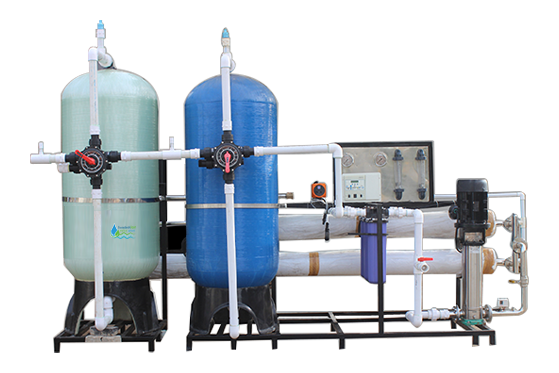Industrial RO System
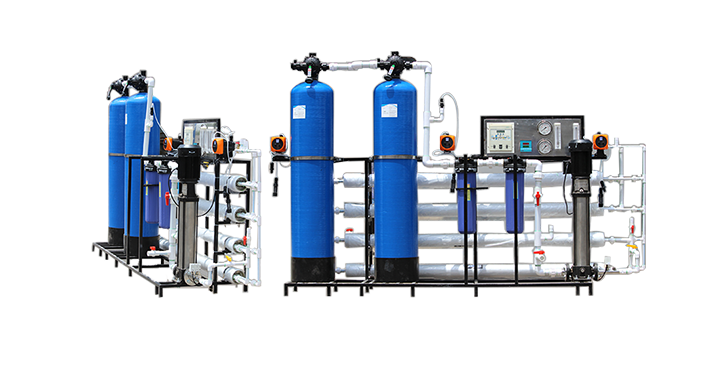
Our Products
Industrial RO System
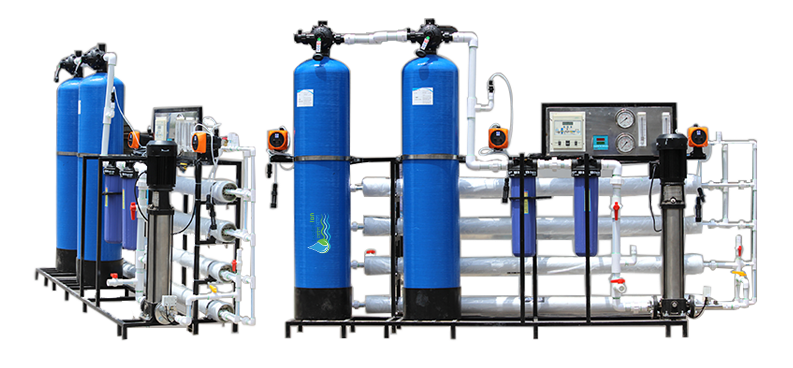
SwadeshIon is India's top supplier and maker of industrial RO systems. The small and largely industrial setting is best suitable for the industrial water filter system. To satisfy the needs of our customers, we provide the finest industrial RO plant. Our system is very affordable and dependable for a commercial setting. Our commercial RO water purification system is completely specialized and appropriate for an industrial setting. These commercial RO units operate entirely automatically.
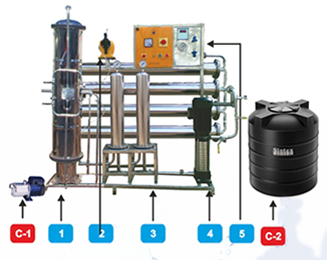
C1. Raw Water Pump (client Scope):
- Multi Media Filter
- Dosing System
- Micron Cartridge Filter (pre-Treatment)
- Hight Pressure Pump
- Reverse Osmosis System
C-2. RO Water Storage Tank
Model: X'AT (SS) Capacity: 500LPH
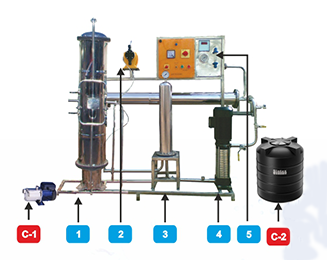
C1. Raw Water Pump (client Scope):
- Multi Media Filter
- Dosing System
- Micron Cartridge Filter (pre-Treatment)
- Hight Pressure Pump
- Reverse Osmosis System
C-2. RO Water Storage Tank
Model: X'AT (SS) Capacity: 2000LPH
RO technology offers maximum flexibility to meet diverse requirements. Our customised software, INDIAN helps customers gain the maximum ‘RO Advantage’, by helping to make the right selection.
INDIAN considers your inlet water quality and capacity requirements and offers you optimised combination. This choice is dependent on different flux rates, pump models, membrane types and inlet water quality. It gives the right solutions, reduced
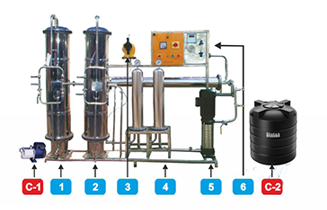
C-1. Raw Water Pump (client Scope):
- Dual Media Filter
- Anthracite Filter
- Dosing System
- Micron Cartridge Filter (Pre-Treatment)
- Hight Pressure Pump
- Reverse Osmosis System
C-2. RO Water Storage Tank
Model: X'MAX (SS) Capacity: 500 LPH
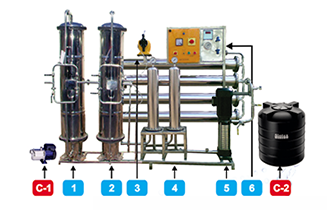
C-1. Raw Water Pump (client Scope):
- Dual Media Filter
- Anthracite Filter
- Dosing System
- Micron Cartridge Filter (Pre-Treatment)
- Hight Pressure Pump
- Reverse Osmosis System
C-2. RO Water Storage Tank
Model: X'MAX (SS) Capacity: 2000 LPH
Advantages:
- Simple to setup and maintain
- Complete automation
- Safe water to consume
- For simpler troubleshooting, remove both active and dormant bacteria from the VMS.
PRINCIPLE OF REVERSE OSMOSIS
The reverse osmosis (RO) method involves pressured water passing through a semipermeable membrane. This causes water to pass through the membrane surface while the dissolved and particulate components are left behind, as seen in the schematic image below. Water is driven through the membrane from the concentrated side to the dilute side when pressure is applied to the concentrated solution. Reverse osmosis is the name for this procedure.
SCHEMATIC DIAGRAM
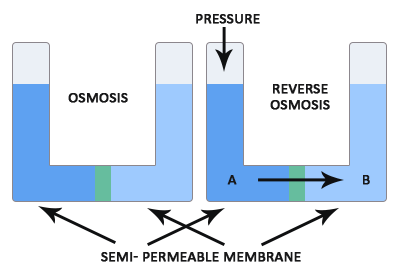
- (A) CONCENTRATED SOLUTION
- (B) DILUTE SOLUTION
The Membrane Based Technology
Understanding the fundamental mechanisms involved in the process, reverse osmosis's limitations, and the prerequisites for pretreatment are necessary for the application of reverse osmosis to the resolution of water treatment issues.
In order to permit fluid to pass while preventing the passage of dissolved ionic material, reverse osmosis makes use of the special characteristics of a "Imported" semi-permeable membrane. Pure water will pass through such membrane materials when pressure is applied to unclean water on one side, leaving the majority of the contaminants behind. Both molecular weight and ionic charge affect how the dissolved ionic substance is rejected.
For instance, if sodium chloride is rejected nominally at a rate of 90%, the product water that passes through the membrane will have a salt concentration that is around one-tenth that of the feed water. Calcium carbonate (Hardness) will be rejected by a margin of around 95%. whereas 98% to 99% of metallic salts will be rejected.
Mechanical filtering is the main method for removing organic or non-ionic particles.
What is reverse osmosis System?
Two main components make up the Reverse Osmosis System: the High Pressure Pump and the R.O. Membranes. At this pressure, the first purified water production rate is calculated.
Operating at a lower water recovery percentage seems to have long-term advantages, especially in terms of lowering system maintenance and avoiding precipitation issues that could result from operator error.
It is crucial to understand that the purified water from a reverse osmosis system is often supplied to a vented storage tank practically at atmospheric pressure. The product water line valve cannot typically be opened and closed to operate it (unless special pressure relief is provided). Due to the system's high pressure, water is forced through the membrane as a result. Additionally, if the pressure on both sides of the membranes were equal, there would be no possibility of water flow. The pressure would increase if, for any reason, the product water line was shut off while the system was in use.
Of course, the pressure would eventually equal the pump pressure if the system's purified water side was powerful enough, but at that point, no water would pass through the membrane. In actuality, such high pressure would generally be too much for the P.V.C. pipes on the product water side.
The membrane has a 600 psi "forward pressure" tolerance. i.e., moving from the side facing the water source to the side facing the purified water. They are vulnerable to its tolerance limit for "Back Pressure," nevertheless. I.e., from the supply water side to the direction of the purified water side. Therefore, caution should be used when using the system. For instance, if the feed water is entering at 50 ppm, the filtered water may be between 1 and 2 ppm (rejecting dissolved minerals by 96.0 to 98.00%). Another illustration would be the filtered water being between 10 and 15 ppm when the feed water is 500 ppm. To measure the mineral contents, a conductivity meter or TDS meter is typically employed.
OUR APPLICATION
- Ceramic
- Hospital
- Chemicals
- Hotel
- Dairyg
- Pharma
- Fishing
- Pulp & Paper
- Food & Beverages
- Textile
